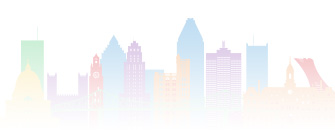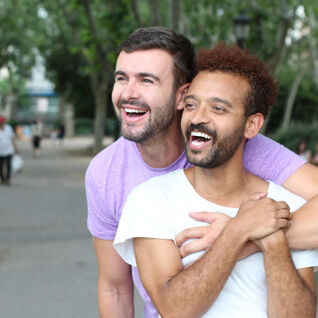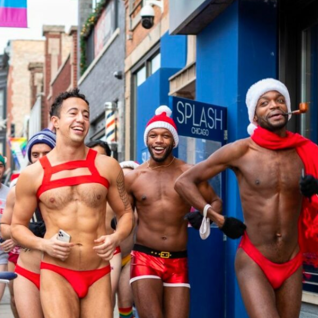
During World War II, Nazi soldiers assigned the pink triangle as the symbol to be worn by gay prisoners. The Holocaust resulted in the extermination of approximately six million Jews and five million other prisoners of war. Among them were queer individuals, many of whom found their identities entangled in various forms of persecution.
The Red Army liberated the concentration camp Auschwitz in January 1945, and the Allies subsequently defeated the Third Reich by May. Yet, queer people have continued to be discriminated against and killed by governmental regimes to this day.
In Amsterdam, otherwise known as the gay capital of Europe, the Homomonument forms three large pink triangles made of granite, set into the ground, composing a larger triangle together. It was first unveiled in 1987 as a queer landmark situated on the Keizersgracht Canal. Commissioned by the Homomonument Foundation, the volunteer-operated organization was created to immortalize the LGBTQ+ lives lost to hatred and eventually became a communal hub for reform.
Pack your bags, we’re going on an adventure
Subscribe to our weekly newsletter for the best LGBTQ+ travel guides, stories, and more.

Designed by artist Karin Daan, it’s the largest monument in the world dedicated to homosexuality. The Homomonument’s significance has evolved beyond any specific commemoration or cause. It stands as a cultural sphere for queer people to honor past generations and pave a brighter path for the future.
The design of the Homomonument tells many stories of perseverance with the triangles strategically positioned. The first triangle points to the National Monument in Dam Square, commemorating all the dead from World War II and subsequent armed conflicts. The second triangle points to the headquarters of COC Nederland, the oldest continuously operating gay rights organization in the world, dating back to 1946. Lastly, the third triangle points to Ann Frank’s house and includes an inscription from a poem by a gay Jewish poet: “Naar Vriendschap Zulk een Mateloos Verlangen” (“Such an endless desire for friendship”).

Local documentary photographer J. Knuchel tells GayCities the Homomonument is a community gathering space where people protest and grieve. They note, “There are a lot of homophobic incidents [in Amsterdam] still,” making the landmark a hotspot for queer calls to action.
“But it’s really more about community,” They add. “Once I got to know more people here, I discovered [the gay community] is a small world, and most people know each other or someone who knows that person.”

In other words, whether it’s a celebration or vigil, the LGBTQ+ community in Amsterdam shares a deeply rooted connection due to its relatively small population. However, the monument also serves as a place akin to Stonewall in New York, where the seeds of change can be planted and where toasts and cheers for achievements are held. Fabulous drag shows included.
The Homomonument Foundation has worked tirelessly to ensure the monument serves various needs of the community, with an emphasis on advancing equality, fostering connection, and giving queer artists a platform to express themselves.
Drag performer Angel Boy tells GayCities the nightlife scene in Amsterdam is full of activism through queer art, and they traveled from their small hometown of Tilsburg to perform at the Homomonument on Kings Day. “It was absolutely gorgeous,” they say. “Everyone was kind.”
Queer people, like Angel Boy, often face prejudice from their own community. They believe the letters in LGBTQ cannot find liberation if they do not cement themselves in solidarity with one another. “Gay guys treat trans femmes or gender nonconforming people (especially of the feminine side) as if we aren’t part of the community,” Boy says. “We’re being treated like the weird aunt who no one likes, and that’s just not cute.”
For them, the Homomonument is a reminder about the importance of inclusivity in all its forms.

Ultimately, the queer journey to equality transcends language and geography, and their stories echo that of the LGBTQ+ community all over the world. Still, history must credit the Dutch as the first to have legalized gay marriage in 2001, and their culture has consistently appeared a few steps ahead in liberal policies.
DJ Darling Peter agrees that society has come a long way, but the fight is far from over.
“We never should take this monument for granted; for me, it is one of the most important spots in Amsterdam,” he says. “I try to go to every event that happens at the Homomonument, whether it’s a protest, a remembrance, or a party,”

Queer landmarks serve as perpetual reminders of the fragility of equality, helping to prevent the darkness of history from creeping into the present. Beyond their symbolic importance, they provide safe spaces for queer people to come as one for a cause or visit individually for reflection.
“My favorite day is always the 5th of May, Liberation Day; since 2015, I hosted events there, and since 2010, I play a DJ set every year,” says Peter, who admits his bias but believes queer people have the most fun. “For me, personally, what I like the most is the variety of people that comes to [Homomonument]; all different scenes from the community come together and celebrate life, love, and queerness.”
Don't forget to share:




















